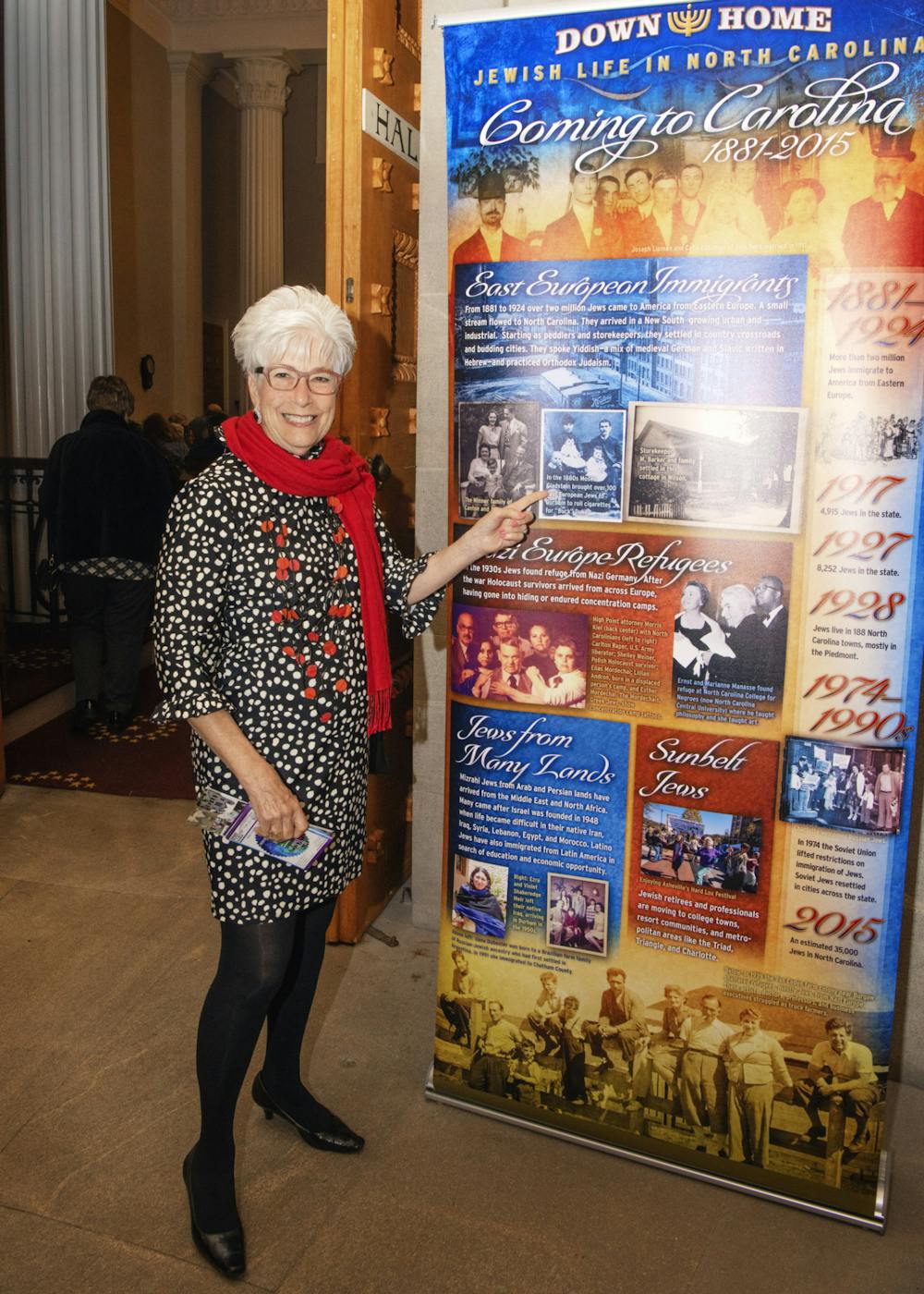Walking into the visitor center of Duke Homestead, one might be surprised to see a small exhibit on the history of the Jews in North Carolina in the lobby. However, this is a fitting site for it, as the Duke family is strongly connected to the North Carolina Jewish community and employed Eastern European Jews as cigarette rollers in its factories. Because of these ties, the Duke Homestead requested to display the exhibit, which was created by Jewish Heritage North Carolina. Additionally, North Carolina’s Jewish population precedes the commercial tobacco industry which the center serves as a museum for. Similar to the other groups of people whose stories are represented in the museum, the Jews of North Carolina are also a diverse people whose origins span multiple continents and several centuries.
The exhibit starts with a brief history of the Jews of North Carolina, starting in 1585 when Joachim Ganz arrived as the metallurgist for the Second Roanoke expedition. He was Sephardic, a member of the group of Jews who fled the Iberian Peninsula during the Inquisition in search of refuge, with dozens of other Sephardim eventually reaching this state. They were followed by German and English Jews who came in search of a better life. Both of these groups settled in the towns and cities of the Piedmont, with North Carolina being home to 2500 Jews by 1800. In the late 1800s, Eastern Europeans Jews came in droves, followed in the 1930s and 1940s by Jews fleeing persecution in Germany. In the aftermath of the Holocaust, dozens of survivors came here to start new lives. More recently, there has been an influx of Jews from Latin America as well as the Middle East and North Africa, adding more groups to the already diverse and vibrant culture of Judaism in North Carolina. Interestingly, much of this historical information is left out of the central narrative of the state’s history, despite Jews being among the first settlers of this state and having a series of migrations into the state.
Next, the exhibit explains the traditions and lifestyle of Jewish people. First, it talks about the centrality of family in Judaism and the broadness of that term for the Jewish people (as the Hebrew word for family includes all Jews), while also showing how Jewish immigration often consisted of a family chain. After this, it touches upon Jewish dietary law and what conditions and rules are required for certain foods and animals to be kosher, with a brief sidenote about the prevalence of Jewish delis — an often overlooked part of our culinary culture — throughout the state. It then presents captioned photos of Jewish rituals like lighting the hanukiah (a 9-pronged lamp) and Bar or Bat Mitzvahs while explaining various holidays and traditions. As a Jewish North Carolinian, I felt this was the one part of the exhibit that was lacking, mostly because despite being about family and lifestyle and having captioned photos, it lacked enough direct stories or anecdotes to really give a feel for our state’s Jewish community. It would have been beneficial to include more anecdotes and stories from the individual Jewish communities, both of how they celebrate shared traditions and how they made their own, to show more of how our state community practices Judaism.
After this, the exhibit displays the contributions of the North Carolina Jewish community to commerce, arts, science and education in North Carolina. It starts by charting the evolution of Jewish businesses from traveling peddlers to the owners of dry goods stores throughout the state. Some of these stores would grow into national chains like Family Dollar, Pic n Pay Stores and Heilig-Myers. Next the exhibit shows how Jews contributed to the industrial economy of North Carolina as workers and owners in the state's vast textile mills and cigarette factories. It then discusses the success and obstacles Jews faced while getting educated in the state, including at the college level. After this, it shows the contribution of North Carolinian Jews to science, including the co-invention of the barcode and the invention of the Moog Synthesizer, as well as Nobel Prize winning scientific work. Lastly, it shows the rich contributions of Jews to literature and art, like various works by several award-winning writers, as well as respected editors and artists. These various contributions are also not well known or discussed in the state, with many North Carolinians — both Jewish and non Jewish — not knowing about most of them despite their significance.
According to Duke Homestead Site Manager Julianne Herczeg, the reaction to the exhibit has been positive, and people have been surprised by its contents as well as by what they’ve learned. It has also received visits from members of the North Carolina Jewish community, who have enjoyed it, with some finding personal connections to its contents. All in all, I found the exhibit to be a great and highly informative look at Jewish North Carolinian history and the contributions of the Jews to North Carolina, despite it feeling a little impersonal when discussing lifestyle and traditions. It also did a great job of bringing what was often a silent and not-talked about presence to greater awareness, ensuring that the contributions of the Jewish community to North Carolina will be understood and known by more people. For those interested in seeing the exhibit for themselves, it runs at the Duke Homestead until September 14. There is also an online component for those unable to visit in person.
Get The Chronicle straight to your inbox
Signup for our weekly newsletter. Cancel at any time.
Zev van Zanten is a Trinity sophomore and campus arts editor of The Chronicle's 119th volume.

